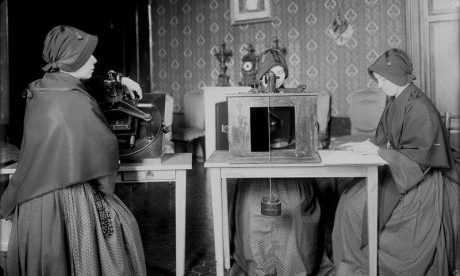The history of astronomy is riddled with underappreciated women who looked to the stars long before their scientific contributions were recognized.
But the constellation of early women astronomers is glowing brighter, writes Carol Glatz for Catholic News Service, with the recognition of four once nameless nuns who helped map and catalog half a million stars in the early 20th century.
Glatz reports that the nuns, Sisters Emilia Ponzoni, Regina Colombo, Concetta Finardi and Luigia Panceri, were recruited by the Vatican to measure and map stars from plate-glass photographs. They cataloged the brightness and locations of a whopping 481,215 stars during their years of diligent work.
Photos of the nuns had appeared in books about the history of astronomy, but the identity of the women was not known—and their accomplishments not recognized—until now.
Their years of labor were finally acknowledged when Father Sabino Maffeo, a Jesuit priest who works at the Vatican Observatory, found their names while organizing papers for the archives.
Today, the project to which the nuns contributed is as obscure as the nuns themselves, but at the time it was one of the largest scientific undertakings in history.
In April 1887, 56 scientists from 19 countries met in Paris to embrace a new discipline: astrophotography. Their plan was a bold one—use 22,000 photographic plates to map the entire sky.
The work was split up among institutions across Europe and the United States, including the Vatican Observatory. Each institution was given a particular zone of the sky to map and categorize.
At the time, male astronomers often relied on women to serve as their “computers.” The men would direct the project, but behind the scenes, women did the labor-intensive processing, cataloging and calculating for low wages.
Famously, Harvard Observatory director Edward Charles Pickering hired “Pickering’s Harem,” a group of bright young women, to do his share of the star cataloging. Also known as “the Harvard Computers,” these women, formidable astronomical minds in their own right, were only recently acknowledged for their contribution to science. Continue reading
Source and Image:
- Smithsonian.com, an article by Erin Blakemore, a Boulder, Colorado-based author and historian.
News category: Features.




